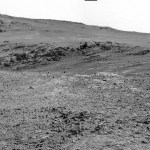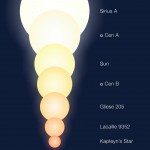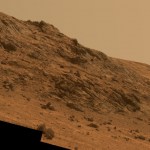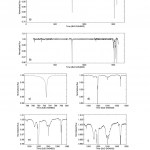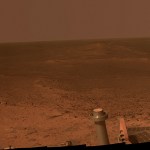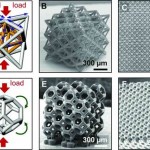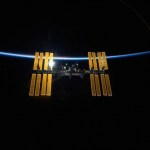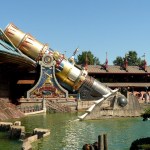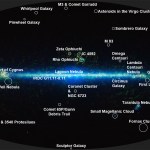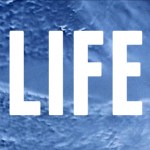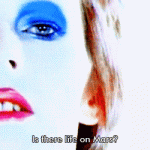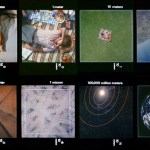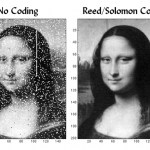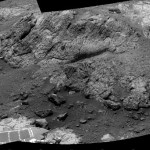space
The Opportunity rover landed on Mars thirteen Earth calendar years ago today, and it still works fine after driving ~44 km! This is the farthest any off-planet vehicle has gone so far. Oppy's mate Spirit was mobile on the Red Planet for over five years and then functioned as a stationary science platform for another year before getting killed off by a Martian winter it couldn't avoid. Amazing engineering that keeps working year after year without a technician so much as touching it.
At the moment Oppy continues to explore the western rim of Endeavour crater, where it's spent several years.…
Don't let their small size fool you. Tardigrades, or 'water bears', are really tough animals. According to a review published in the American Scientist, these microscopic invertebrates can survive extreme variations in temperature from near absolute zero (-459 deg F) up to +302 deg F. They can also tolerate pressures that are 6 times greater than the deepest ocean, exposure to ionizing radiation (UV and x-ray) and the vacuum of space, as well as exposure to carbon dioxide and monoxide, nitrogen and sulfur dioxide. What's more, they can survive nearly…
The Pale Red Dot project has found a planet.
It is a terrestrial planet, orbiting in the formal habitable zone of Proxima Centauri, the nearest star to the Solar System.
This wide-field image shows the Milky Way stretching across the southern sky. The beautiful Carina Nebula (NGC 3372) is seen at the right of the image glowing in red. It is within this spiral arm of our Milky Way that the bright star cluster NGC 3603 resides. At the centre of the image is the constellation of Crux (The Southern Cross). The bright yellow/white star at the left of the image is Alpha Centauri, in fact a system…
Photo of Astronaut Robert Overmyer from NASA, via Wikimedia Commons.
I recently went on a trip to visit the Endeavour space shuttle currently on display in Los Angeles. Seeing the shuttle up close brought back memories of watching the space shuttle launches on TV and the childhood dream of visiting other planets...a dream that also inspires Hollywood to continue to produce movies and TV shows about space exploration. Turns out, The Martian movie may soon become reality. In fact, NASA is working towards sending astronauts to Mars sometime in the 2030's. Aside…
Yay, NASA Senior Review is out:
SeniorReviewReport_2016
tl;dr - everyone is above average, they're good enough and we like you.
Mission ranks
bad news: per AAAC meeting earlier, there is not enough $ to actually pay for all these lovely toys, so something will have to give, somewhere.
Someone at a high enough pay grade to take the blame will decide whether to cut from the bottom or give everybody a haircut.
Early tealeaf readings are haircuts all around.
Official NASA site for Senior Review + Response
The Opportunity rover landed on Mars twelve Earth calendar years ago today, and it still works fine after driving ~43 km! This is the farthest any off-planet vehicle has gone so far. Oppy's mate Spirit was mobile on the Red Planet for over five years and then functioned as a stationary science platform for another year before getting killed off by a Martian winter it couldn't avoid. Amazing engineering that keeps working year after year without a technician so much as touching it.
At the moment Oppy is still exploring the rim of Endeavour crater, where it's spent several years. It's in…
As of this morning we have discovered over 1,500 exoplanets, planets orbiting stars other than the Sun.
In addition to the confirmed discoveries, we have over 3,000 candidate exoplanets, most discovered by the NASA Kepler Mission through transits, where we see the shadow of a planet as it crosses in front of its parent star.
We know, statistically, that most of the candidate planets are real, but a few % are weird misalignments of something else that makes us think there might be a planet there. Filtering those out is hard.
We also see other things, weird and wonderful things...
Little over…
The Opportunity rover landed on Mars eleven Earth calendar years ago today, and it still works fine after driving ~42 km! This is the farthest any off-planet vehicle has gone so far. Oppy's mate Spirit was mobile on the Red Planet for over five years and then functioned as a stationary science platform for another year before getting killed off by a Martian winter it couldn’t avoid. Amazing engineering that keeps working year after year without a technician so much as touching it.
At the moment Oppy is still exploring the rim of Endeavour crater, where it's spent several years. The rover…
In which Chris "Slick" Ford challenges me, and I accept.
In turn, I challenge Valerie, Diddi and Stefan.
You know who you are.
h/t to Sir Patrick Stewart for illustrating how to properly take on such challenges.
Astrophotography is the title of a gorgeous and very useful new book by Thierry Legault
I had to taper off doing book reviews, much to the annoyance of all those lovely people who persist in sending me just the sort of books that I actually really love to read - it just got too time consuming - but, when Rocky Nook told me Thierry Legault had a book on Astrophotgraphy coming out, I agreed to review it immediately.
This is why:
shades of Atlantis
Atlantis
From NASA HQ Photo on Flickr
Thierry Legault is an expert and he takes beautiful photos. He is particularly known for his patient set up…
A research group at Lawrence Livermore National Laboratory has produced ultrastiff ultralowdensity metamaterials by 3D printing of microarchitected microlattices.
This is very cool - they do additive 3D printing using microstereolithography with nanocoating and postprocessing and can make self-similar lattices with densities varying by several orders of magnitude in bulk density but near constant stiffness.
Construction material can be metal, ceramic or polymer.
LLNL engineered microlattices from Zheng et al Science 344 1373
The lattice geometry can be controlled to choose what mechanical…
Senior Review is out:
summary - Swift #1, then NuStar.
K2 gets partial funding. Spitzer is terminated.
Panel recommends not cutting off the bottom but balancing fields.
NASA Response to the 2014 Senior Review for Astrophysics Operating Missions - Final Version for Release (5.16.14) - this is an edited update of the NASA response that was on the website on the 15th of May. It is tagged as Final version and for release, so I guess it is now official.
Final Report Astro 2014 Senior Review Panel (pdf)
NASA Response to 2014 Senior Review for Operating Missions FINAL (pdf)
NASA used the…
Guest Blog by Festival X-STEM Speaker Dr. Jeffrey Bennett
Originally Posted on The Huffington Post May 9, 2014
What you cannot imagine, you cannot do.
--Astronaut Alvin Drew (STS-118, STS-133)
How many people are living in space right now? I've found that since the end of the Space Shuttle program, most Americans think the answer is zero, but it's not. There are currently six people living aboard the International Space Station, including two Americans (Steve Swanson and Rick Mastracchio), one Japanese citizen (Koichi Wakata), and three Russian cosmonauts. All the astronauts…
Though I really enjoyed my late 70s childhood visits to Disneyland and Disneyworld, I am no friend of disnification, and I've always seen the Paris Disneyland as a bit of a joke. But my mom wanted to treat my kids to a visit last week, and so I came along too.
The Paris Disneyland has five sections. The US small-town nostalgia section full of Disney memorabilia shops, the faux-16th century fairytale section, the adventure movie section and the wild west section didn't do very much for me – though the Pirates of the Caribbean ride is admittedly hugely atmospheric, and the Small World ride…
"I am undecided whether or not the Milky Way is but one of countless others all of which form an entire system. Perhaps the light from these infinitely distant galaxies is so faint that we cannot see them." -Johann Lambert
When we look out at the Universe, our view is pretty consistently dominated by the stars within our own galaxy. Although we know that many interesting things lie beyond -- globular clusters, individual galaxies, and rich clusters and superclusters of galaxies -- being in the Milky Way makes it very hard to see beyond it.
Image credit: Richard Payne, of Arizona…
Discovery, by nature, has a ripple effect. When one thing is found to be plausible, testable, or true, a suite of potential other truths and plausibilities tend to follow suit. This is the nature of inductive reasoning, the foundation of the scientific method, and the reason why science–as a human project–is generational. We discover something unexpected, and we celebrate twofold, threefold, and morefold, because its nuances and implications can ebb outwards, often lending hope to scientists working in entirely different fields.
Take the recent discovery of life in Lake Vostok, for instance:…
You certainly didn't hear it here first: today NASA, at a press briefing, announced that minerals analyzed by the Curiosity rover indicate that life might, in the galactic past, have survived on Mars. The rover's been poking around an ancient network of stream channels descending from the rim of Gale crater since September of last year; now, after drilling into the sedimentary bedrock nearby, it's hit on a treasure trove of life-supporting minerals: carbon, oxygen, hydrogen, phosphorus, sulfur, and nitrogen. These mineral findings are really just icing on the cake, as the geological…
What is distance?
There's the distance between people, who subconsciously space themselves apart, providing a reliable visual matrix of intimacy. It's no coincidence we use the word "close" to describe our most intimate relationships: to whisper and caress, we draw near to one another, less than six inches apart. For chatter amongst personal friends, the norm ranges from 1.5 to four feet. The more estranged, the farther away we shrink. Social distance for interactions among acquaintances overlaps with the previous category, but ranges outwards to nearly twelve feet. Of course, we don't always…
The cultural critic Walter Benjamin, in his seminal 1936 essay The Work of Art in the Age of Mechanical Reproduction, argued that the "aura" of a work of art, that sense of special awe and reverence we feel, being in its presence, isn't inherent to art itself. Rather, it's a side-effect of its exclusivity, restricted exhibition, authenticity, or perceived value. With the age of "mechanical reproduction" (i.e. printed copies, films, and photographs), that aura disappeared, freeing art from its ties to the bourgeoisie and allowing mass audiences to, in a sense, "own" the work too. Take the Mona…
The wonderful Curiosity rover on Mars has been much in the news lately, but let's not forget about the previous rover generation! Opportunity landed on Mars nine Earth calendar years ago today on 25 January, and it still works fine. Its mate Spirit was mobile on the Red Planet for over five years and then functioned as a stationary science platform for another year before getting killed off by a Martian winter it couldn’t avoid. Amazing engineering that keeps working year after year without a technician so much as touching it.
Oppy is still on the rim of Endeavour crater, the area where it's…
